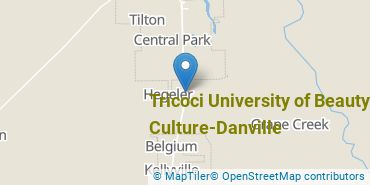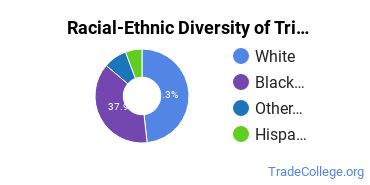Tricoci University of Beauty Culture-Danville Trade Programs
Tricoci University of Beauty Culture-Danville is a private for-profit institution located in Urbana, Illinois. The city atmosphere of Urbana makes it a great place for students who enjoy having lots of educational and entertainment options.
Featured schools near , edit
Where Is Tricoci University of Beauty Culture-Danville?

Contact details for Tricoci Danville are given below.
| Contact Details | |
|---|---|
| Address: | 202 East University Avenue, Urbana, IL 61801 |
| Phone: | 630-528-3330 |
| Website: | www.tricociuniversity.edu |
Can I Afford Tricoci Danville?
Student Loan Debt
While almost two-thirds of students nationwide take out loans to pay for college, the percentage may be quite different for the school you plan on attending. At Tricoci Danville, approximately 92% of students took out student loans averaging $8,419 a year. That adds up to $33,676 over four years for those students.
Tricoci University of Beauty Culture-Danville Undergraduate Student Diversity

Racial-Ethnic Diversity
The racial-ethnic breakdown of Tricoci University of Beauty Culture-Danville students is as follows.

| Race/Ethnicity | Number of Grads |
|---|---|
| Asian | 0 |
| Black or African American | 0 |
| Hispanic or Latino | 0 |
| White | 2 |
| International Students | 0 |
| Other Races/Ethnicities | 0 |
Tricoci University of Beauty Culture-Danville Trade School Concentrations
The table below shows the number of awards for each concentration.
| Major | Basic Certificate | Undergraduate Certificate | TOTAL |
|---|---|---|---|
| General Cosmetology/Cosmetologist | 0 | 43 | 43 |
| Aesthetician/Esthetician & Skin Care Specialist | 33 | 0 | 33 |
| Cosmetology, Barber/Styling, & Nail Instructor | 0 | 0 | 0 |
| TOTAL | 33 | 43 | 76 |
References
*The racial-ethnic minorities count is calculated by taking the total number of students and subtracting white students, international students, and students whose race/ethnicity was unknown. This number is then divided by the total number of students at the school to obtain the racial-ethnic minorities percentage.
More about our data sources and methodologies.
Featured Schools
 Request Info
Request Info
|
Southern New Hampshire University You have goals. Southern New Hampshire University can help you get there. Whether you need a bachelor's degree to get into a career or want a master's degree to move up in your current career, SNHU has an online program for you. Find your degree from over 200 online programs. Learn More > |
